CV description of the lecturers with photo
| Name | Description of profile |
|---|---|
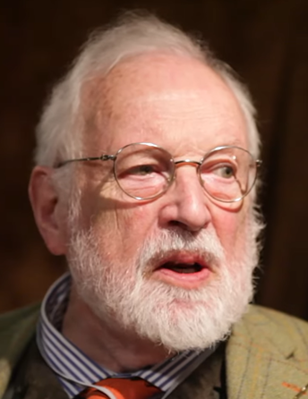 James Stevens Curl |
Having graduated in Architecture at Oxford,
JSC went on to study Town Planning, writing his Dissertation
under the direction of the German architect, Arthur Korn.
He later read for his Doctorate at University College London.
He has held Chairs at three Universities, and has twice been
Visiting Fellow at Peterhouse, University of Cambridge.
JSC has had an especial interest in historic buildings and conservation,
and became a full-time academic in 1978, having already published perceptive
articles and books which began to establish his reputation for impeccable
scholarship, a fine prose-style, and penetrating insights. Subsequently,
he developed his career as a professional writer,
producing influential and acclaimed books and
papers on architectural history and taste.
His forays into relatively unexplored fields of research still blaze
trails inevitably followed by others of more timid dispositions.
Among his most famous books are Making Dystopia: The Strange Rise
and Survival of Architectural Barbarism and the Oxford Dictionary
of Architecture cowritten with Susan Wilson.
The Necessity of Classicism: A Rich & Varied Language Capable of Infinite Applications The term ‘Classical’ implies something of the first rank, highest class, order, authority, or importance, a standard, or a model. It is therefore exemplary, characterised by clarity, completeness, symmetry, deceptive simplicity, repose, harmonious proportions, and is associated with civilised life, perfection, taste, and serenity. The ‘Classical Language of Architecture’ is not a free-for-all in which elements are arbitrarily thrown together: it is a highly sophisticated, adaptable system, and suggests something coherent, not meaningless, with all sorts of allusions, capable of enormous ranges of expression (like the spoken language of a culture). Modernism, however, has discarded a great language, a mighty and expansive vocabulary, and a whole system of grammar and syntax, in favour of a series of monosyllabic grunts, with the predicatable making of a ghastly Dystopia of uninhabitable cities: so, without an alphabet (only a few images of approved exemplars), a vocabulary, or a language, Modernism only represents itself and Barbarism. |
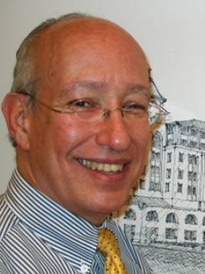 Nir Haim Buras |
Leading new traditional architect and urbanist, founder of the Classic Planning Institute,
and author of "The Art of Classic Planning" (2017). Dr. Buras' current work helps local
communities with their long-term planning, architects designing new local architectural
styles, teaching institute fellows in architectural competence and classical planning,
and researching the neuroscience of the built environment with society with his
scientific colleagues.
Dr. Buras designs cities, towns and buildings,
he holds workshops, writes and lectures regularly.
The art of classic planning Classic Planning is how we build cities before planning ruins them. It is a holistic method based on the idea of the unity of truth, goodness, and beauty. It is expressed in terminology of the Built environment as, “firmness, commodity, and delight“. In contemporary language, this means durability, adaptive, reuse, and an experience of beauty. Since most of what we see, standing in city streets is buildings, obviously, Architecture is of primary importance in Urbanism and to get a suitable aesthetic experience, it has to follow the classical proportions. Also significant is that manual construction contributes greatly to the well-being of passersby in that it satisfies the brains 50% commitment to manual dexterity. Most fun to contemplate and most difficult to address is the fact that cars, vehicles and even bicycles are perceived by the brain as large animals perhaps most significant is that, due to the fact that memory is locational, please making is memory making. |
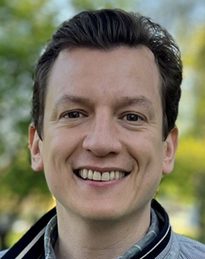 Michael Diamant |
He is the founder of New Traditional Architecture.
Diamant is an urban sociologist with great interest in architecture,
city planning, demography, history and social anthropology.
He has been interested in traditional architecture and urban planning since he was 19,
but it first in 2013 that he decided to start the advocacy that has now become global.
This site and the others he has created on different socail nedia platforms are
a part of a successful effort to change to discourse or public debate about what
we allow ourselves to build.
Caring about the climate - why traditional architecture is the only answer to our modern problems The lecture will explore why traditional architecture and city planning is the solution to our modern social, ecologic and economic problems. How beauty can decentralize our countries and help small cities, while combating increase in CO2 emissions and foster local patriotism. |
 Brandon Ro |
Assistant Professor Brandon R. Ro, AIA, NCARB, ICAA is an award-winning architect,
researcher, and educator.
His projects have received awards from the U.S. Green Building Council,
American Institute of Architects, American Planning Association,
and Walt Disney Imagineering among others. As the co-founder of
Utah Valley University’s new professional degree in architecture,
he has been instrumental in developing new curricula rooted in
the classical tradition. Ro teaches design studios as well as
architectural history and theory. His published research aims at
improving the interconnectivity between architecture, culture,
and human experience. He has also specialized in the role of
architectural ornament and given lectures on the topic.
He holds architecture degrees from the Catholic University of
America and California State Polytechnic University Pomona.
Beauty and the Brain: Reconsidering the Role of Ornament in Architecture This presentation endeavors to dismantle the myth propagated by Adolf Loos that ornament is a criminal element in architecture. By diving into various related concepts, we aim to reveal the significant role ornamentation plays in architectural design. Our exploration will encompass an examination of the aesthetic impact of beauty on the human brain by probing into the realm of fractals and their captivating properties. As fractals exhibit measurable dimensions and qualities that attract human cognition on conscious and unconscious levels, we contemplate whether similar effects arise from viewing architectural patterns and ornamentation that can potentially reduce stress and improve health. Investigating how the human brain—particularly in its pre-attentive phase of vision—responds to architectural details, we draw the conclusion that the aesthetic experience of beauty enriches cognitive processes. Contrary to the notion that “less is more,” we assert that ornamentation holds inherent value that is intertwined with mathematical proportions, geometries, and fractal patterns. As a result, we challenge the notion that employing ornamentation in architecture constitutes a crime. Instead, ornament plays a critical role in the aesthetic experience of beauty and can have positive effects on human health and well-being. |
 Nikos Salingaros |
Physicist and mathematician, urban planner and architectural theorist.
A. Salingaros is a professor of mathematics and also teaches at the school
of architecture at the University of Texas in San Antonio, but also employed
on the architecture faculty at the Università di Roma III, Italy.
His books include: “Principles of Urban Structure” (2005);
“A Theory of Architecture” (2006); “Algorithmic Sustainable Design” (2010);
and “Anti-architecture and Deconstruction” (2004), in addition over
120 scientific articles. Salingaros uses scientific methods and tools
to replace outdated working assumptions that created dysfunctional
urban regions after World War II.
See
Nikos Salingaros Wikipedia for more information.
Non-modernist principles of urban planning - the scientific approach With the increasing urbanization of the planet, it is essential to use science to plan the human habitat. Lessons from traditional settlements define evolved elements of architecture and urbanism that have adapted to human biology. Those are verified by the latest diagnostic techniques using eye tracking and neuroscience. But Modernism implemented a strange ideology with inhuman typologies that the architecture-industrial complex forced users to adapt to. This effort continues the worst sort of massive social engineering trying to reshape humans into mindless machines. Researchers argue that the modernist built environment is generating enormous amounts of stress and long-term pathologies. |
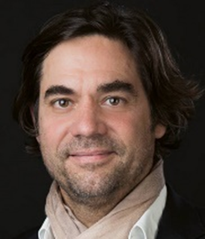 Robert Patzschke |
Robert Patzschke is a German architect in his 50s.
He studied in London and Berlin and joined the family’s architecture
firm in 2001.
In 2005 he ventured into India where he set up a branch office to the
main firm in Berlin.
This remained his focus of attention for close to ten years.
Since 2015 he has taken the lead in the company’s head office in Berlin.
Patzschke Architects was founded in the late 1960s by Robert’s father
and uncle Rüdiger and Jürgen Patzschke. In 2019 the company celebrated
its 50s anniversay.
From the 1990s PAT has evolved into a strong promoter of contemporary
classical and traditional architecture. In Germany the firm is seen as
the early protagonist in this field. The design and construction of the
Kempinski Grand Hotel Adlon in the historical centre of Berlin, which
was completed in 1997, set in montion a huge debate on architecture in
Germany.
Today Robert leads the firm with a team of 25 people together with his
cousins Tatjana and Thaddäus Patzschke as well as their partners Michael
Mohn and Jonas Olfe.
Robert studied architecture at Universität der Künste Berlin and
is a frequent used lecturer - both in Germany and elsewhere in Europe.
New Classical architecture in Germany |
 Justin Shubow |
Justin Shubow is president of the National Civic Art Society,
a nonprofit organization headquartered in Washington, D.C.
that promotes the classical and humanistic tradition in public art
and architecture. He is former chairman of the U.S. Commission of Fine Arts,
an independent federal agency that is the aesthetic guardian of Washington,
to which he was appointed by President Trump. Shubow has testified in Congress
on topics such as the future of the National Mall and the design of the
Dwight D. Eisenhower Memorial. He has published architectural criticism
at Forbes online, First Things, Public Discourse, The Washington Post,
and The Weekly Standard. He has delivered talks on architecture and other
subjects at the U.S. Department of State, American Enterprise Institute,
Baylor University, Colorado College, Hamilton College, and
the Universities of Michigan, Pennsylvania, and Virginia.
Shubow received a B.A. from Columbia University, a J.D. from Yale Law School,
and completed four years of study in the University of Michigan’s
Ph.D. program in philosophy; he has taught philosophy courses
as an instructor at the University of Michigan and Yale College.
He is a member of the Board of Advisors of the Roger Scruton
Legacy Foundation and the Board of Academic Advisors of the
Alexander Hamilton Institute for the Study of Western Civilization.
Carl Korsnes interviewed him recently about architecture for Sivilisasjonen.
Ordinary people's aesthetic preferences in architecture What are ordinary people’s aesthetic preferences in architecture, especially public architecture? This is a longstanding question that only a few have endeavored to empirically answer. In 2020, the National Civic Art Society undertook a survey of 2,000 American adults conducted by The Harris Poll of "Americans’ Preferred Architecture for Federal Buildings." The poll found that 72% of Americans prefer classical and traditional design, and there were widespread majorities across all demographic groups, including political party affiliation, socioeconomic status, gender, and race. This talk will discuss empirical studies of public preferences in architecture, with special focus on the NCAS survey. What explains the studies’ results? The talk will include a discussion of the response to such studies, including the response from architects and critics who are members of the architectural establishment. Does the establishment question the results or push back on them? The talk will also address political implications of the studies. |
 Branko Mitrovic |
Professor of architectural history and theory at NTNU.
He has PhDs both in philosophy (2007) and architecture (1996).
Mitrovic has been a recipient of the Humboldt Research Award and
research fellowships from the Harvard University,
Canadian Centre for Architecture, the Humboldt Foundation,
the National Gallery in Washington DC and the Clark Art Institute.
Professor Mitrovic is the author (or co-author) of ten books
and his recent book "Architectural Principles in the Age of
Fraud" explores the abuse of philosophical jargon by modernist
architecture profession.
Architecture principles in the age of fraud The talk presents the book Architectural Principles in the Age of Fraud published by Oro Books in 2022. The book is a study of the abuse of obfuscation, pseudo-philosophical jargon and the incompetent philosophical posturing by modernist architects in order to defend their work. It systematically surveys a series of obfuscatory strategies that have been used by the architecture profession in order to deflect criticism for the visual-aesthetic failure of modernism. The book shows how apparently diverse trends in architectural theory (phenomenology, deconstruction, digital theories) all use the same obfuscatory techniques and with the same aim—to suppress visual-aesthetic concerns that the modernist-trained architecture profession is not able to respond to. |
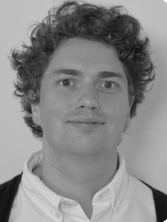 Kristian Hoff-Andersen |
Kristian Hoff-Andersen is an architect and former city council politician in Drammen.
He is educated at Bergen School of Architecture, Nansen School and The Royal
Danish Academy of Fine Arts. In his youth he was also a
representative for Nature and Youth. He is a very active debater
and participates as a speaker and polemicist - as a clear defender
of classical architecture. Hoff-Andersen gave an architectural
history lecture on Henrik Bull's early masterpiece Paulus Kirke at BUA 2023.
Learning how to draw architectural ornaments at Christiania Drawing School 1818-1910 From the very beginning of the Christiania Drawing school, in 1818, the courses on how to draw ornaments had a central role in the curriculum. In the first year, the students were making drawings of copper engravings and plaster sculptures. In the second year, the students practiced free-hand drawing, even of living models. In the final year, students made drawings of sculptures, classical orders of the pillars, and architectural ornaments. Both students of architecture and handicraft had obligatory and extensive training on how to draw ornaments. In this lecture we will have a look inside the teaching practices of ornaments at this school - of a long forgotten past, through the fragments of documentation of the teaching practices and some surviving examples of the students' own work. |
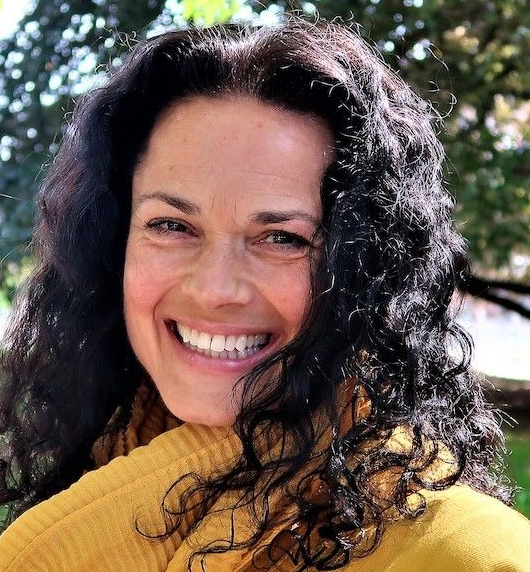 Taran Sørensen Grønlie |
Taran is a norwegian interior architect and frequently used public speaker.
Taran has a background in multiple disciplines: educated in Theater studies,
History of Arts, pedagogics and ethnology from University of Oslo.
Taran has recently published numerous articles in a variety of
Norwegian newspapers about the lack of aestethics in modernist
buildings, and the failure of modernists to embrace beauty
on the inside of buildings.
She is the author of
the recent book
"Those damn pillows"
.
Beauty on the inside: The history of interior decoration before modernism hits Europe The establishment of the middle class is the precursor to the form of living we have today. If the development of the history of privacy is to be summed up, it is about making it comfortable at home. With the establishment of the middle class (in europe 1750 and Norway a century later), came the demand and production of interior products as we know them today. The establishment of the home became a safe fan. I will take us on a journey through various homes, in the time from the establishment of the middle class until our time. It is claimed that modernism has moved in and replaced our soul: That we follow the laws and rules of modernism, including in our private lives and inside our homes. In the lecture we will find out if this is actually the case. |
 Sindre Hovde |
Hovde is a Norwegian woodcarver with extensive practical experience
and a broad portfolio of completed wooden ornaments. Course leader
and lecturer on the craft of wood carving. Sindre is the main teacher
in woodcarving at Flyvesjiraffen. He has his education from Hjerleid
in Dovre. Sindre teaches all the classic Norwegian styles.
He has also specialized in acanthus and rococo ornamentation,
at the small art school
Flyvesjiraffen.
How to practically reintroduce more wooden ornaments - and how to draw an acanthus We will talk about what makes a good ornament designer or wood carver. In practice, how should one create a breeding ground for new styles based on ornaments? The lecture will also present 'Karveskurd', a traditional way of making patterns in pieces of wood - as the woodcarvers' common ancestor in styles. In the lecture, we will also show the construction of the Acanthus plant - how tro draw it, and how to integrate the Acanthus into different styles. |
 Tor Olav Austigard |
Tor Olav Austigard is a practicing architect, investigating spaces for
creativity and thinking in the vast traditions of Norway, Europe, and Japan.
Tor Olav Austigard also holds a degree in neuroscience, frequently lecturing
on creativity and unconscious in relation to architecture.
He has supported the public oppsosition towards modernist architecture
through a series of lectures and articles, especially focusing on
scientific evidence
Japanese traditional buildings in wood As we again turn to classical traditions in European architecture, we are confronted with the nature of our own contemporary culture and how that might be aligned, non-aligned, or just irrelevant for architecture. In that context Japanese architecture may provide a surprising contemporary backdoor into ancient as well as pre-Christian Nordic culture, and also help overcome European dogmatism. |
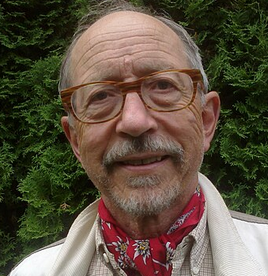 Truls Aslaksby |
Aslaksby is a Norwegian art historian, antiquarian, researcher
and communicator of Oslo history. He grew up at Frogner in Oslo.
Aslaksby obtained a cand.mag. degree in 1967 and in 1977
he became a mag.art. in art history with the thesis
Skiensfjord classicism – building style in the trade and
production environments between Ulefoss and Langesund
approx. 1800–1850. In 1998, he obtained his doctorate
in philosophy based on the books “Grønland and Nedre Tøyen's
settlement history” and “With the tenem ent as a solution”.
He was university lecturer in art history at the University
of Bergen 1980–81, scholarship holder at the Urban Research
Program of RFSP - the Council for Research for
Community Planning 1981–1985, and manager at
Larvik City Museum 1986–87. From 1988 to 2012,
he was chief antiquarian at Byantikvaren in Oslo.
Wrote a number of books, primarily on architectural
history topics, and especially in relation to Oslo,
in addition to magazine articles.
Ornamented brick architecture in Oslo 1840-1920 Because of fire-preventing building regulations, 19. century Oslo architecture was built in brick and plastered. From the 1830s traditional mason’s techniques were augmented by ready-made architectural ornaments. These were made by terracotta and were, in line with the empire style, few and sparsely used, and restricted to monumental public buildings. Then from the 1840s on, ornaments made of gypsum became steadily more used. This material will not stand exposition to rain, so it was mainly used under cornices and other protruding elements. After 1900 the use of gypsum was regarded as unethical – fake – and discarded in favor of traditional mason’s techniques. The texture of outer walls was in itself treated as an ornament, as well as the interplay of volumes, small crossbars in windows, etc., until all sorts of facade ornaments were banned by functionalist theory and practice. |
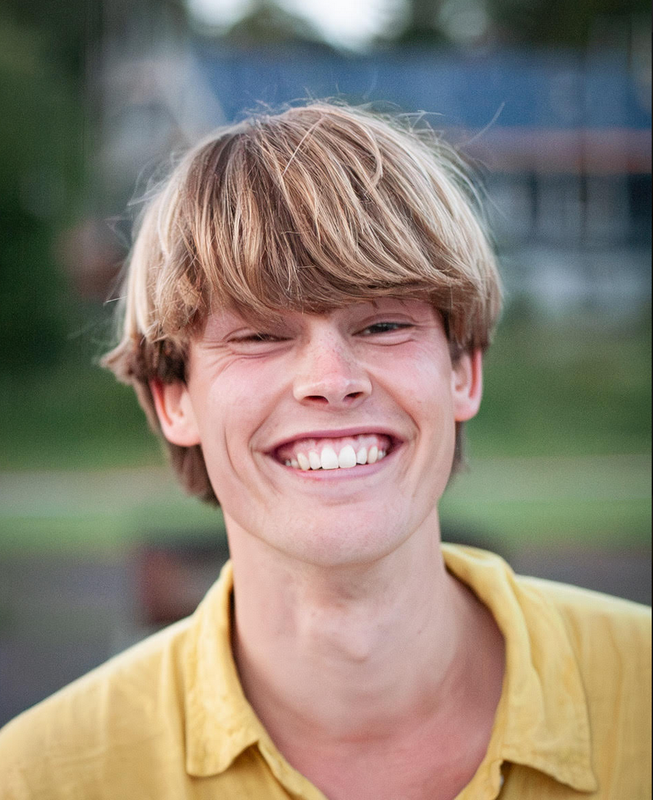 Sigurd Randby |
Sigurd is a student of architecture from the
Norwegian University of Science and Technology (NTNU),
currently on exchange to Rome. He is an outspoken advocate
for beauty in design, approaching aesthetics as a practical
craftsmanship rather than a matter of taste. In addition
to his involvement in classical architecture, he has built
his own student home, apprenticed in wood joinery and worked
as an assistant scenographer in the National Theatre.
Today, he is an enthusiastic member of the National Trust,
devoted to preserving and expanding Norway's architectural
heritage. The Royal Art Gallery in 2023 Sigurd will present on the classical design studio at NTNU, which marks the first Norwegian studio of classical design in a century—a course he initiated alongside Jacques Dhainaut and Professor Branko Mitrovic. He will offer insights into the transition from «modern» to traditional design, using their project «Trondheim Royal Art Gallery» as example. |
 Ylva Seierstad |
Ylva is originally from Lofoten in Northern Norway.
She has studied one year at the Norwegian University of Life Sciences (NMBU),
and is currently in the final year as a student at the
Norwegian University of Science and Technology (NTNU).
She is in the process of writing my diploma in architecture,
focusing on the densification and development of small cities
and towns using traditional and local building practices and
identity as a starting point. She has also attended
Graz University of Technology (TU Graz) in Austria for a year
as an exchange student.
She is part of the
second generation students to form the classical studio in Trondheim.
Classical Studio - Museum and Planetarium in Trondheim Last semester, a classical studio was held at NTNU, where the students where introduced to the principles of the classical tradition, as well as traditional methods of producing and presenting a project, such as the art of watercolouring.Two tasks were completed during the semester, the first being an exercise of and a first introduction to classical design where the students were given a plan drawing and a set of requirements the building had to fulfil, such as having a portico, a gallery and a dome. The final task was to design a science and astronomy museum, with a planetarium. The project was placed to a real site in Trondheim. Seierstad will present her latter project, with a focus on the plan and the façade. She will also discuss the process and the experiences of the studio in general. |
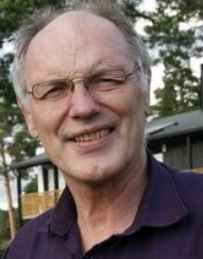 Olav Anders Bjerve |
Studying Duncan of Jordanstone College of Art.
Department of Architecture 1970-1973.
Diploma thesis on urban renewal in Bakklandet with
the main emphasis on reconstruction after a fire
in Nedre Bakklandet in traditional architecture in 1975.
From 1975 an onwards he has devoted most of hos practice
to traditional architecture. He has also worked in the oil
industry with computer design of the worlds largest residential
installation at sea on an exofish oil field for conoco.
Bjerve has been chairman of Vålerenga Vel in the 1980's
and working with the conservation plan and reconstruction
of the wooden housing development at Vålerenga.
He has been interviewed by NRK (Norwegian Broadcasting Corporation)
in connection with a film about the wooden city in Oslo.
Bjerve is a member of INTBAU NORWAY.
The peculiar Dragon-Style wood architecture (1880-1910) in Christiania – case Hasselbakken The dragon style was an attempt to revive the old Nordic animal ornamentation, often mixed with Romanesque vines. The style arose out of the romantic enthusiasm for the past that arose in Norway in the second half of the 19th century as well as a desire for an independent Norwegian culture after 400 years under Danish rule and a celebration of liberation from Danish rule! In the middle of Oslo there was a majestic restaurant - called Hasselbakken, in this peculiar and rare style. The building burned down in 1936, and now after over 80 years - we want to rebuild it! A short history of the timber industry, traditional woodcraft and sustainable forestry Forestry has provided the foundations for human life and materials for thousands of years. Some of the most beautiful pieces of architecture are made of wood. The forests produce oxygen and store carbon dioxide, and are thus an important piece in the puzzle to solve the climate challenges. In the recent decade there has been considerable focus in the Nordic countries on designing modernist large-scale buildings, even skyscrapers in wood. But is it really sustainable? Modern forestry is performed with extensive use of machines and the timber is mostly transported with large trucks. How can we assure that timber is used in a sustainable way in our built environment but also ensure that the extraction of timber from the wood is done with minimal carbon emission? A way to solve this could be to have a short look into our near past - in order to look at the history of timber extraction. |
 Eskild Narum Bakken |
Eskild Narum Bakken is a Norwegian architect focusing on
aesthetics and the classical tradition. In addition to
teaching and research at the Norwegian University of
Science and Technology (NTNU), he frequently gives
seminars and lectures. A particular focus in later years
has been aesthetics and building code, teaching
aesthetic evaluation in building permit applications
and authoring public documents on the subject.
Bakken is also a practicing architect, mainly working
with rehabilitation of traditional architecture.
Contemporary vernacular & classical architecture - keeping the styles alive Traditional styles in architecture are alive and well, they commonly represent aesthetic patterns corresponding to human biology and psychology. Timeless styles have one common denominator: Beauty. A beautiful environment is a basic human need, it will never go out of style. This lecture presents examples of traditional styles in contemporary environments, demonstrating how they can be adapted to recent requirements and kept alive. |
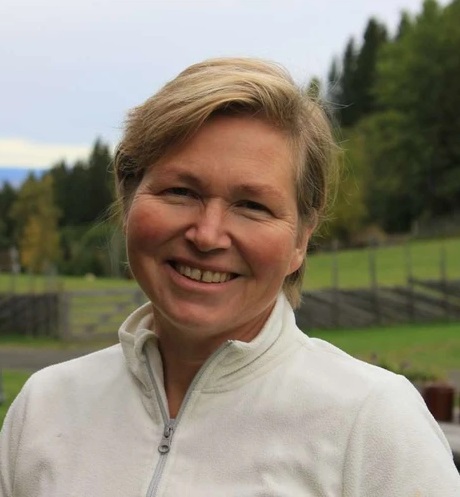 Anna Louise Gjør |
Gjør runs a small painting company, with a catchment area in Hamar
and the region around Mjøsa. After over 20 years in the field,
she has built up a broad and varied knowledge with specialist
expertise in restoration and decorative painting.
In addition to the Svenneprøve-test and craftswomans
certificate, she has studied at the Technical
Vocational School in Denmark, art history UiB and was a
state scholarship holder for painting at Maihaugen.
She has worked on restoration at the Kings Castle in Oslo,
Drammen theatre, museums, old wooden churches and painted venerable houses and cabins.
Based on the use of old products and workmanship, she offers
traditional and solidly executed craftsmanship.
How to use older decoration patterns in a new interior The lecture will be based on the restoration of our old houses. It is actually possible to preserve old and peeling decor and we show several examples of how this could be the best solution. The field of decorative painting is about man's timeless need to surround himself with decorations. This need is naturally inside us. Decorative painting is therefore not necessarily dependent on having to recreate the decor of earlier times, but that even today one has the freedom to think new things, use old patterns in new forms, and create new decor that feels natural for our time. By using history as inspiration, and with our own ideas, we have great opportunities to beautify our buildings. |
 Jens Christian Eldal |
Art historian with a master's degree and dr.philos.degree
from the University of Oslo. Throughout his professional
life, he has worked with building history and building
conservation, first at the Directorate of Cultural Heritage
(Riksantikvaren) and later as a senior researcher at the
Norwegian Institute for Cultural Heritage Research (NIKU).
Eldal has published the doctoral thesis Historicism in wood:
"Swiss style", romanticism of building customs and national uniqueness
in European and Norwegian wooden architecture (1998) and
the volume about the 19th century in the publication Churches in Norway (2002).
He was co-author of the books With tradition and atmosphere:
“En reise til norske trehoteller” (1996) and
Chr. H. Grosch: “Arkitekten som ga form til det nye Norge” (2001).
Eldal has written a number of articles, mainly about
Norwegian architecture in the 19th century. Author of several
books and numerous articles about historical architecture,
mainly of the 19th century. Co-editor of the
Norwegian Dictionary of artists and architects
(Norsk kunstnerleksikon), vol 1-4, Oslo 1982-1986.
Latest publication:
"Sveitserstil? Den internasjonale historismens mangfoldige trearkitektur"
, Oslo: Pax forlag,
2019, about the international picturesque wooden architecture of the 19th century.
The Picturesque: 19th-century aesthetics and wooden architecture From around 1800, the aesthetics of the English picturesque brought new ways of seeing and sensing art and architecture. It opened up for subjective experience – rather than defining objective form. Practical results were the discovery of the vernacular and medieval architecture and their adaption as inspiration sources. Many facets of European and Anglo-American Historicism grew out of these new practices and their aesthetic theories. In wooden architecture, dwellings like cottages, villas, and chalets were dressed in new, mixed, and reinvented styles. Here, the originally English ideas first materialized in "Old English" soon followed by Italian and Gothic styles, as well as Swiss, French, and German vernacular traditions. This new wooden architecture conquered the world under differing names like Stick Style and Carpenter Gothic in America, "style Chalet" in France, (often misleading) Swiss Style in large parts of Europe, or the friendly Carpenter's Joy in Sweden. |
 Nathan Andrews |
Nathan is a student of the Classic Planning Institute who moved from Australia
to Tromsø after his discovery of Norway's wonderful architectural traditions.
He has under his own time and effort studied the form, materials, and resilience
of Northern Norway's wooden architecture in the harsh climate of the Norwegian Arctic.
He is an ardent critic of the recent developments in the North, and frequently
points out the inability of contemporary architects to produce warm and
welcoming spaces in a part of the world that experiences several months
of near-total darkness a year
Let's build a beautiful arctic city In a land of heavy snow, dark winters, and unforgiving weather, good urban design is essential for not only the wellbeing of residents, but the functioning of cities. Where traditional approaches met these conditions, modern developments do not. In this talk we will explore the unique aspects of planning a city in the Norwegian arctic, the ways modern developments fail, and how we could build a beautiful arctic city. |
 Arne Sødal |
Sødal is a Norwegian architect.
He is particularly known for using planforms as a tool in
urban development processes and for having designed the new
Holmenkollen chapel in a traditional style.
To produce drawings for the chapel, Sødal bought a large-format
printer in 1993 and this was recovered and celebrated as Norway's oldest in 2013.
He has also been the chief planner for the successful Risørholmen, a
new but tradition-based plan for traditional wooden architecture on the Norwegian coast.
He helped start INTBAU and heads the Norwegian branch.
Planning norwegian urban fabric – smalltown coastal architecture – case Risørholmen Risørholmen - where 86 new family homes are built in an architectural dialect that communicates in scale and form, both with the old wooden town center and our modern lifestyle: a practical , light functionality that supplement the old town, enjoys the proximity to its commercial and cultural arenas and have the harbour, the sea and the horizon as a daily treat! But the project did not start like this . Risørholmen has been a long journey where many concepts by renown architects failed - before finally the key to solve to problem were found: Simply «More Risør!!» - meaning for this old coastal wooden town; only a friendly approach worked - to carve out the architectural style. |
 Karl Fredrik Honningsvåg |
Karl Fredrik is an architecture student at NTNU,
who has worked with traditional and classical architecture throughout
his master's degree. He is now working on his diploma thesis
where he works to challenge the notion at NTNU that
explicitly classical architecture cannot fulfill our
modern requirements for buildings.
Architectural water colour rendering on the drawings of new large classical buildings Architectural water painting and colouring is an art form that has long been lost among Norwegian architects - for a very long time. In the talk he will present an alternative proposal for the National Museum in Oslo - that shows how classical principles and classical practices deployed to large scale museum buildings could be done in our time. He will also show how the detailed architectural drawings can be given life, realism and depth by using architectural watercolor rendering. |
